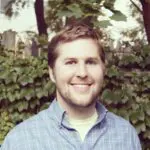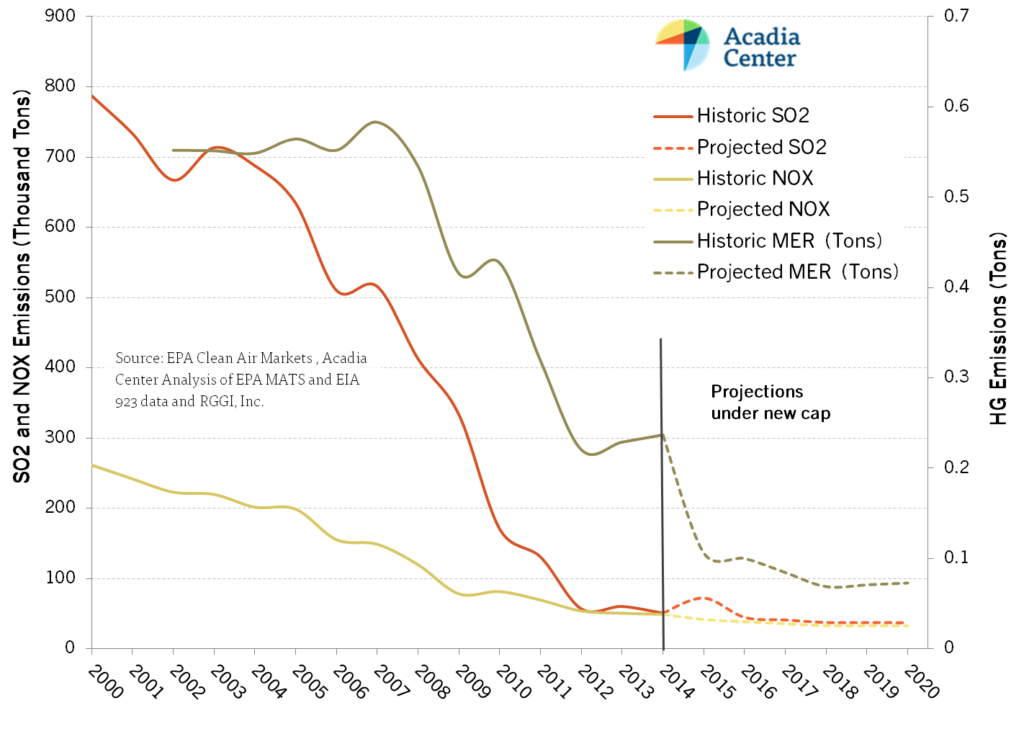Four Ways to Reduce Your Energy Usage this Winter
With the arrival of autumn’s cooler weather as a reminder that winter is just around the corner, now is the time to think about ways to reduce your heating energy usage. You’ll save money and reduce your carbon footprint at the same time. Here are four things to consider doing before winter arrives:
- Air sealing is one of the quickest and least expensive ways to reduce energy use. Many homes have lots of cracks and gaps that allow cold air to enter and create uncomfortable drafts. Most of the states in this region have low-cost programs that will bring in a home performance professional to do this work with specialized equipment that allows them to quickly locate and seal gaps as well as ensure that a home still gets a safe amount of fresh air. Contact your local utility to see what program offerings are available.
- Insulation can also dramatically lower heating costs. Insulation levels are generally assessed when air sealing is done. Attic
 insulation can pay for itself very quickly. Wall insulation is often more expensive, but is still usually a good investment for most homes. Often overlooked is basement insulation. Uninsulated basements are very common in New England and can waste a lot of energy. This waste can be dramatically reduced by either insulating basement walls or insulating the basement ceiling. In all cases make sure that proper air sealing is done in conjunction with the insulation.
insulation can pay for itself very quickly. Wall insulation is often more expensive, but is still usually a good investment for most homes. Often overlooked is basement insulation. Uninsulated basements are very common in New England and can waste a lot of energy. This waste can be dramatically reduced by either insulating basement walls or insulating the basement ceiling. In all cases make sure that proper air sealing is done in conjunction with the insulation. - Windows are often what individuals think of first when improving the efficiency of a home, but in many cases they cost a lot more than they save. If you have double pane or storm windows, you should probably consider upgrades first. However, if you are replacing your windows anyway for other reasons, be sure to get the highest efficiency you can, as the difference in price is typically not that great. Look for windows with the lowest “U factor” for the most savings.
- Heating Systems are typically replaced when the old one breaks. If yours is on its last leg, make sure you have a plan in place for replacing it with a high efficiency unit. If you’ve insulated and air sealed your home, chances are you can use a smaller and less expensive unit than the size you have now. Planning ahead will spare you from trying to make these decisions on a cold winter day
 when you have no heat. Another option to consider is adding a ductless heat pump, which will produce heat even on the coldest winter days at low cost and with a lower carbon footprint. In the summer it offers very efficient cooling as well.
when you have no heat. Another option to consider is adding a ductless heat pump, which will produce heat even on the coldest winter days at low cost and with a lower carbon footprint. In the summer it offers very efficient cooling as well.
Helpful links:
- Massachusetts: MassSave
- Connecticut: EnergizeCT
- Rhode Island: National Grid RI
- New Hampshire: Eversource NH
- Maine: Efficiency Maine
- Vermont: Efficiency Vermont
Jamie Howland leads Acadia’s  Climate & Energy Analysis Center (CLEAN), and Energy Efficiency and Demand Side Initiative. His work as a policy analyst focuses on data management on energy markets and emissions trends, buildings and land use issues.
Climate & Energy Analysis Center (CLEAN), and Energy Efficiency and Demand Side Initiative. His work as a policy analyst focuses on data management on energy markets and emissions trends, buildings and land use issues.
Climate Smart Communities Conference Focuses on Climate Mitigation and Adaptation Best Practices
The 2015 Climate Smart Communities Conference held in Newburgh, New York on September 25th brought together state and local municipal officials, program managers, and other stakeholders seeking to address and mitigate the impacts of climate change. The conference focused on the Climate Smart Communities (CSC) program, a unique partnership established in 2009 between six New York State Agencies and local communities designed to reduce greenhouse gas emissions. The program expects local governments to lead by example through adopting more clean and efficient municipal operations and encouraging broader community participation with education and outreach.
There are currently 167 Climate Smart Communities throughout New York State, though levels of engagement vary widely. For a city or town to receive the designation, its local government must adopt a pledge that consists of ten elements ranging from decreasing community energy use to enhancing community resilience. Governments that do so are eligible to work with CSC Regional Coordinators to achieve their climate goals.
 Source: NYS Department of Environmental Conservation
Source: NYS Department of Environmental Conservation
The morning session at the conference started with a discussion of community microgrids. Interest in the small-scale power grids recently spiked in the state thanks in part to the NY Prize (RFP 3044) – a 40 million dollar community microgrid competition. In his presentation, John Saintcross, Assistant Director of NY Prize, emphasized that the competition is designed to promote broad participation. Of the 137 submissions received in the first stage of the competition, only five are expected to win $3-5 million to complete their projects by 2020, but the State hopes that participation alone will encourage local communities to continue exploring the idea of a microgrid and seek other funding opportunities.
The second presentation featured highlights from a New York Power Authority (NYPA) program intended to develop and fund energy plans for the five largest cities outside NYC. The plans included a comprehensive set of initiatives set to reduce energy consumption and greenhouse gas emissions as well as improve quality of life. The cities pursued projects ranging from updating the building codes to upgrading streetlights to LEDs.
However, obstacles to completing these projects exist. For example, eighty percent of municipalities are unable to upgrade streetlights under utility ownership, making regulatory reform providing for a buyout option or an LED tariff their only option if they want to go through with the project. Senate Bill S5205B, which addresses the issue, is currently pending in the NY Legislature.
The conference closed with a joint discussion and anonymous vote on key issues communities face while pursuing sustainability initiatives. The audience members identified flooding and energy outages as primary risks in their communities and called for technical assistance as well as assistance with financing strategies. The state agencies intend to continue working with local municipalities to gather additional feedback and facilitate the process of establishing goals and targets, developing implementation plans, and identifying funding opportunities.
Overall, the conference successfully highlighted innovative community projects, identified areas for program improvement, and provided a platform for participants to exchange ideas and resource sharing among participants.

Irina Rodina is Staff Counsel at Acadia Center focusing on grid modernization and utility reform in New York State. Irina has extensive experience in environmental and energy policy, including renewable project development and market issues, community energy development, sustainable agriculture, and climate change.
Clean Energy Coalition Launches in Massachusetts
As Massachusetts policymakers return to the Hill this fall, several important bills impacting our state’s energy future have been filed for consideration. In anticipation of these impending energy debates a new clean energy coalition has formed. The coalition, Mass Power Forward, officially launched at the beginning of the month with simultaneous events throughout the state in Weymouth, Boston, Holyoke, Pittsfield, Peabody, and Fall River.
The Boston launch was held on the roof of the Greater Boston Food Bank (GBFB), which is fittingly home to a 260kW solar array. The array is one of the largest in Boston and provides a great example of the economic and environmental benefits of clean energy. When discussing his decision to install the array David Noymer, CFO for the GBFB, said “We are proud of the steps we have taken to become energy-efficient. The technologies that we employ are not only forward-thinking, but allow us to save money and operate more efficiently and effectively, which directly helps advance our mission to End Hunger Here in eastern Massachusetts.” Noymer was joined by Eugenia Gibbons from Mass Energy, Emily Kirkland from Better Future Project, and Rev. Anne Bancroft from Theodore Parker Church in calling for a cleaner energy future.

This diverse coalition already has over 100 members, including Acadia Center, and is composed of environmentalists, public health advocates, community groups, clean energy companies, faith-based organizations, and social justice leaders. Together these advocates represent a united front calling for a transition from the current energy system to a low-carbon, consumer friendly, clean energy future. As more people learn about the importance of developing a clean energy future, the coalition will continue to grow.
On its website, Mass Power Forward calls for an energy policy that:
- “Advances Massachusetts toward a safer and healthier economy powered by local, clean, renewable sources, maximizing energy efficiency, responsibly sited solar, wind on and off-shore and energy storage; keeping us on track to reduce our climate change pollution by no less than 80% by 2050;
- Reduces our dependence on polluting energy sources such as coal, oil, gas and nuclear, and frees our power grid from imported fuels, volatile markets and dangerous power generation facilities;
- Prioritizes neighborhoods, families and our public lands over utility monopolies and the polluting energy industry; and prohibits public subsidies for gas pipelines or other new fossil fuel infrastructure;
- Modernizes our power grid and empowers everyday people to access locally generated power;
- Assists workers and communities with retiring power plants to participate in the benefits of the green economy and clean energy transition.”
After a successful launch, the Mass Power Forward coalition is looking ahead to a legislative hearing scheduled for September 29th where several important energy bills will be considered. Massachusetts sits at the crossroads of our energy future. It’s essential for us to choose the right path towards a low-carbon, consumer friendly, clean energy future.

Tyler Soleau is Acadia Center’s Energy and Climate Outreach Director working from the Boston office. He focuses on raising awareness, network building and advancing Acadia Center’s clean energy program goals in Massachusetts and the Northeast. Tyler came to Acadia Center from the Massachusetts House of Representatives where he served most immediately as Staff Director and Counsel for the House Committee on Climate Change.
The Benefits of Stakeholder Engagement in Energy Efficiency Programs
At the invitation of a stakeholder group convened by the New Hampshire Public Utilities Commission (PUC), I recently gave a presentation in Concord on the Connecticut Energy Efficiency Board (EEB), a stakeholder advisory body to the state’s energy efficiency programs. In addition to being a Senior Attorney at Acadia Center, I currently sit as the Chair of the EEB. The New Hampshire PUC has been convening stakeholders in 2015 to consider how it could ramp up investment in cost-effective energy efficiency.
My presentation detailed the benefits of robust stakeholder engagement in energy efficiency planning and explained the main roles and responsibilities of the EEB. Here are some key facts and insights:
- The CT EEB’s main role – as set by statute – is to advise and assist the utilities in developing and implementing the state’s energy efficiency plans and programs. The Board’s set of diverse stakeholders has been performing that role successfully since 1999 and is now in the process of finalizing the next three-year energy efficiency plan, known as the 2016-2018 Conservation & Load Management Plan (C&LM Plan).
- The CT EEB’s statutorily-required review and approval of the C&LM Plan is an important formal step in the process of ensuring that the Plan offers strong and verifiable efficiency benefits to customers before it moves on to final review and approval by the CT Dept. of Energy & Environmental Protection.
- A permanent stakeholder body like the CT EEB helps with energy efficiency planning in several valuable ways: (1) it gives energy efficiency programs a broad base of support and input from expert stakeholders; (2) it leads to more efficient and productive energy efficiency decision making; (3) it reinforces high standards for energy efficiency program design and implementation; and (4) it helps to ward off raids on energy efficiency funding and give programs much needed stability and continuity.
- Most importantly, stakeholder bodies can help drive strong results for energy efficiency customers. For example, for the past eight years the three New England states with stakeholder councils – Connecticut, Massachusetts, and Rhode Island – have all placed in the top ten of the American Council for an Energy-Efficient Economy’s (ACEEE) State Energy Efficiency Scorecard.
In the end, the significant and proven value produced by stakeholder bodies like the EEB underscores the need to formally involve stakeholders in the major energy resource decisions we face in coming years as the energy system rapidly evolves and modernizes. For more on how stakeholder bodies can protect and help the modern energy consumer, see Acadia Center’s recent UtilityVision report.

Bill Dornbos is the Director of the Connecticut Office and Senior Attorney for Acadia Center. Bill focuses on advancing policy and regulatory solutions that seek to transform the energy system and move Connecticut towards a climate-safe, sustainable future. Recent work includes advocating for expanded investment in cost-effective energy efficiency for all fuels and analyzing greenhouse gas emissions trends in the Northeast.
Acadia Center Submits Comments to Connecticut DEEP about Weatherization
Weatherization of our residential housing stock will be critical to achieving an affordable clean energy future in Connecticut.
Four years ago the Connecticut General Assembly made a smart move when they required the state’s Conservation and Load Management Plans (“C&LM Plan”) to take steps to weatherize eighty percent of the state’s residential units by 2030. The statute, however, did not include a definition of weatherization, so the Connecticut Department of Energy and Environmental Protection (DEEP) along with stakeholders developed a draft definition in the fall of 2012.
The definition endorsed three possible approaches for defining a building as weatherized: a prescriptive approach (looking for the presence of certain building elements on a checklist), a performance approach (comparing the home’s energy performance against an equivalent modeled home), and a rating approach (using the U.S. Department of Energy’s Home Energy Score). Nothing was ever finalized, however, and two and a half years later DEEP has just recently issued a revised draft of the definition.
The latest definition is much weaker than the first and if approved would not help the state track the condition of its existing housing stock for weatherization purposes. For instance, the definition selects a Home Energy Score value that may allow as much as 60% of existing homes to qualify as weatherized. Worse, homes without wall or ceiling insulation could be considered as weatherized, even though those two building elements are typically viewed as key to any weatherization treatment.
Today Acadia Center issued comments on the definition, recommending that DEEP strengthen it and allow the state to take advantage of all of the economic and environmental benefits that can be achieved through weatherization. Acadia Center’s comments focus on five key points:
- DEEP should establish a weatherization standard so that regulators, policymakers, the General Assembly, stakeholders, and the public can track and measure our progress over time towards the 80% weatherization policy goal, but it should be stronger than what they have proposed.
- DEEP should use a modeling approach as the standard – like the Department of Energy’s Home Energy Score – rather than having multiple options that can lead to conflicting results and confusion.
- If DEEP uses the Home Energy Score, the appropriate score needs to be determined with respect to the existing Connecticut residential building stock.
- If DEEP uses the Home Energy Score, adjustments or accommodations for larger homes should not be made, since the score is based on something close to a typical or average home, any reduction in score for large homes should be balanced by a corresponding increase in scores for smaller homes.
- DEEP’s weatherization standard should be used for policy tracking purposes only, in other words, to measure progress towards the 80% weatherization goal, but not to enforce compliance on homeowners.
Weatherization can provide many important benefits to the state’s residents and economy – reduced energy costs, increased energy independence, and less carbon pollution – but only if it’s done effectively, and with these recommendations Acadia Center hopes to ensure that it is.
Acadia Center’s comments to DEEP are available here.

Bill Dornbos is the Director of the Connecticut Office and Senior Attorney for Acadia Center. Bill focuses on advancing policy and regulatory solutions that seek to transform the energy system and move Connecticut towards a climate-safe, sustainable future. Recent work includes advocating for expanded investment in cost-effective energy efficiency for all fuels and analyzing greenhouse gas emissions trends in the Northeast.
Solar Bills Heat Up at the Massachusetts Legislature
Efforts to Raise the Net Metering Cap
Solar energy has been an important success story in Massachusetts over the last eight years. Three major programs have contributed to this success: retail rate net metering*, solar renewable energy certificates (SREC), and federal tax credits currently scheduled to expire at the end of 2016. Based on these policies, the Commonwealth became a national leader in solar energy, reaching Governor Patrick’s initial goal of installing 250 MW several years early. This prompted the Patrick Administration to embrace a new goal of 1,600 MW of solar capacity, which the Baker Administration endorsed in early 2015.
Unfortunately, Massachusetts solar success is in jeopardy because of legislative caps on the amount of solar capacity that can qualify for net metering, although very small projects are exempted. In past years, whenever there was a danger of hitting these caps, the Massachusetts Legislature agreed to raise them. However, policymakers, including the Baker Administration, have come to demand that increasing the caps should come along with a long-term framework for solar policy. So when the caps were reached in National Grid service territory this March –preventing municipal, community-shared, and low-income solar projects from moving forward in 171 cities and towns across the Commonwealth – no action was forthcoming. At a hearing before the Joint Committee on Telecommunications, Utilities and Energy (TUE Committee) on June 2 , Acadia Center and many other stakeholders proposed a long-term framework – the Next Generation Solar Policy Framework for Massachusetts – that has now been endorsed by 66 organizations and encouraged legislators to act swiftly.
The Senate Acts
As the August recess loomed, it looked as if the Legislature would not address this pressing issue. But in late July, as the Senate prepared to debate a climate adaptation bill, an amendment was unexpectedly introduced to address the net metering caps.
The amendment received bipartisan praise on the floor of the Senate, was attached to the underlying climate adaptation bill, and ultimately the full bill passed unanimously. The solar provisions of this bill would:
- Immediately increase the caps to 1600 MW to accommodate the Commonwealth’s current solar goal and eventually eliminate the caps;
- Allow the Department of Energy Resources to reform the SREC programs or replace them with a new incentive program;
- Grandfather existing solar projects under the current programs; and
- Starting in 2017, allow the Department of Public Utilities (DPU) to adjust the distribution portion of retail rate net metering for solar projects that consume less than 67% of generation onsite.
Overall, this Senate solar amendment is great in the short run and would set the stage for strong continued solar growth after 1,600 MW, including community shared solar, but leaves at least two major questions unanswered. What levels of solar capacity should Massachusetts aim for after the 1,600 MW goal is achieved? And how, if at all, should the DPU use their authority to adjust net metering credits?
The Baker Administration Weighs In
Subsequently, the Baker Administration released its own solar bill, which contains some strong provisions, but also raises at least two major concerns.
On the plus side, the Administration bill would:
- Provide an immediate increase in the net metering caps and the ability for DPU to increase the caps further without legislative action;
- Extend the current programs through 1,600 MW;
- Allow reasonably good grandfathering provisions for projects that start operation before 1600 MW is reached;
- Continue full retail rate net metering for small projects after 1,600 MW is reached;
- Create a new incentive program for post-1,600 MW.
Unfortunately, because the increase in the caps is modest, the bill creates a new problem — needing the DPU to raise the caps again as early as next year. Relatedly, the net metering caps are never eliminated – even for new projects that would be covered by a new net metering structure – so the net metering caps would still be an issue far into the future.
Perhaps even more troubling, the Baker administration’s bill would substantially cut net metering credit value for larger projects after 1,600 MW of solar capacity has been installed. For community shared solar, low-income solar, and municipal projects, the transmission and distribution credits would be entirely removed and other types of projects would receive even bigger cuts. This would significantly affect all types of projects, but it could be a particular challenge for community shared solar and low-income solar. These types of projects are not able to offset the credit value decrease with an increase in incentive programs because of restrictions on how revenue from incentives can be distributed. This change risks setting solar policy back significantly and certainly won’t propel solar forward in Massachusetts.
What’s Next?
Formally, the Senate bill containing the solar amendment (S.1979) has been sent to the House Ways and Means Committee and the Baker administration’s bill (H.3724) is now at the TUE Committee. This allows for a wide array of possible next steps. The Legislature should hit the ground running on these issues when the legislative recess ends in September.
Massachusetts would benefit if the many good aspects of both bills moved forward, such as strong grandfathering for existing projects and a continuation of current programs until 1,600 MW is reached. Both bills would benefit from a solar goal beyond 1,600 MW and a final bill should provide for a bigger cap increase than the Baker administration’s bill. But the major gap between the two bills is the alteration of the net metering credit framework in the long run. The Next Generation Solar Policy Framework for Massachusetts has a detailed proposal on this issue that is fair to solar generators and other ratepayers – adjusting net metering credits based on the long-run value of solar generation. Stay tuned for a coming blog post on how this would work in Massachusetts and similar proposals across the region.
The framework is available here and those interested in more information or signing on can contact mlebel@acadiacenter.org.
* Net metering allows customers to generate their own electricity in order to offset their electricity usage (through, for example, a rooftop solar PV system). Net metering can lower a customer’s electricity bill by reducing the amount of electricity that the customer buys from the distribution company (the utility). Net metering allows customers to receive credits for any electricity that they generate but do not use. Each distribution company in MA has a cap, and after it is hit, no more customers can use net metering. Small systems, primarily those under 10 kW of capacity, are exempt from the caps. For more info see: http://www.mass.gov/eea/grants-and-tech-assistance/guidance-technical-assistance/agencies-and-divisions/dpu/net-metering-faqs.html#6
Mark LeBel is a staff attorney at Acadia Center working from the Boston office. He primarily works on transportation issues, including electric vehicles and clean fuels, and grid modernization issues. Mark holds a JD with honors from NYU School of Law and an AB with honors in Applied Mathematics with a focus in Economics from Harvard College.
Get to Know Tyler Soleau: 10 Questions with Acadia Center’s Energy and Climate Outreach Director
Can you describe your job in one or two sentences?
I’ll be working as a resource to diverse stakeholders and building awareness to support Acadia Center’s mission to advance a clean energy future.
You came to Acadia Center from the Massachusetts House of Representatives where you served as Staff Director and Counsel for the House Committee on Climate Change. How do you think your experience there will help you with this new position?
At the State House, I developed environmental legislation, advocated for clean energy policies, and interacted with a broad range of groups. Having experienced how successful policy gets made and implemented will help me engage and empower communities and other stakeholders to work towards creating an energy system that supports a fair, healthy economy and environment.
Throughout your career your different positions all seem to focus around environmental issues, why is that?
I’ve been excited about the environment ever since I discovered the outdoors. Climate change is the most critical challenge we face, and I’m committed to doing everything I can to combat it.
What aspect of your new position are you most excited about?
I get pumped talking about all things clean energy and I look forward to speaking with a whole range of folks and getting them excited about clean energy as well.
Energy and Climate Outreach Director is a new position at Acadia Center. How does this role fit into the work and goals of the organization?
Building awareness and support for a great idea involves engaging with a number of different audiences. That is a hallmark of Acadia Center’s strategy, and in this new position I hope to create broader and stronger networks while sharing and developing EnergyVision, UtilityVision and other Acadia Center initiatives.
Can you explain what Acadia Center’s 2014 EnergyVision is all about?
If the aim is creating a low carbon, modern, sustainable, economic, and environmental future, EnergyVision is the path to get us there. It presents a clear and comprehensive framework for achieving key economic and environmental goals through reforms in four interconnected areas.
Who do you hope to reach with these messages and ideas?
Fortunately, the Northeast is an active place for energy and environmental issues. There are countless organizations, communities, companies, and individuals working to promote clean energy and protect the environment. I look forward to strengthening my existing relationships within these active communities and forming new ones.
What do you expect a typical day at Acadia Center is going to be like for you?
I’m discovering that there is no typical day at Acadia Center, thankfully. Whether it’s presenting EnergyVision to a group of students, discussing community energy projects with a town, or meeting with public health advocates, every day is going to be a little different.
What are your top priorities right now?
1. Learn as much as I can
2. Start reaching out to groups interested in working towards a clean energy future
3. Get a plant for my desk
Did you always dream of being an Energy and Climate Outreach Director?
I wanted to be a wizard. Once I figured out being a wizard wouldn’t pan out, I focused on the environment. I’m really into Lord of the Rings.
Five Fun Facts
What was your first concert?
My first concert was They Might Be Giants. I was young enough that my Dad brought me in one of those papoose baby slings. It didn’t stop me from rocking out though.
What’s the best vacation you’ve ever been on?
Between college and law school I traveled around the world for 8 months. I flew into Paris and home from Bangkok and went everywhere in between.
If you could live anywhere where would you live?
I’d take the art and culture of Berlin, the food from Tokyo, and plop them into the mountains of New Zealand. I was fortunate to live in New Zealand for six months during college.
If you could trade places with anyone for one day who would you trade places with?
Real or imaginary? Real Mick Jagger, imaginary Indiana Jones.
What’s your favorite movie?
The Original Star Wars Trilogy.

Tyler Soleau is Acadia Center’s Energy and Climate Outreach Director working from the Boston office. He focuses on raising awareness, network building and advancing Acadia Center’s clean energy program goals in Massachusetts and the Northeast. Tyler came to Acadia Center from the Massachusetts House of Representatives where he served most immediately as Staff Director and Counsel for the House Committee on Climate Change.
The Value of Solar and Vermont’s Renewable Energy Goals
Acadia Center released its latest “Value of Solar” study this month, this time quantifying the grid and societal benefits of solar photovoltaic systems (solar PV) in the state of Vermont. The study highlights the unique value solar PV provides to the electric grid by reducing energy demand, providing power during peak periods, and avoiding generation and related emissions charges from conventional power plants.
Through evaluating six solar PV systems, Acadia Center determined that the value of solar to the grid – and ratepayers connected to the grid – ranges from 19-23 cents/kWh in the Green Mountain State, with additional societal values of 7 cents/kWh. The societal values are based on broader societal benefits, including environmental gains from reduced or avoided greenhouse gas emissions and other pollutants.
Vermont has been working to capitalize on the value of solar and other renewables already. In June, Vermont House Bill 40 was signed into law, creating a new requirement that 55 percent of the power sold by Vermont energy companies must come from renewable sources by 2017. That figure rises to 75 percent by 2032.
This target is the highest anywhere in the US except for Hawaii, which just enacted a law mandating the state use 100% renewable energy by 2045. However, because Vermont’s target can be met using energy from existing renewable energy plants, including hydro power, the overall requirement on its own is not projected to lead to new renewable energy facilities being built.
As a part of the total requirement, utilities are also required to use distributed generation equivalent to 1% of retail electric sales in 2017, and increasing annually to 10% by 2032. This is expected to lead to the build-out of over 400 MW of small-scale, decentralized electricity generation in Vermont, including solar PV.
This is not the first time Vermont has been ahead of other states in clean energy. At the beginning of the year Burlington, the state’s biggest city, announced it was using 100% renewable energy to meet its residents’ electricity needs, making it the first city in the country to do so.
As the state as a whole looks to reach the goals set by the new renewable energy standard, Acadia Center’s study will underline the value that solar provides to the grid and ratepayers.

Ellen Hawes is a senior analyst at Acadia Center focusing on energy systems, land use and carbon markets. She also leads Acadia Center’s participation in the New Hampshire State Energy Strategy process. Ellen received her Master in Forestry from the Yale School of Forestry and Environmental Studies.
RGGI Provides Both Economic and Environmental Benefits
A new report from Acadia Center highlights the benefits of the Regional Greenhouse Gas Initiative (RGGI), a cap-and-trade program in the New England states, New York, Maryland, and Delaware that started six and a half years ago. The benefits, which stem from emissions reductions and investing revenue the program generates, include declining energy bills, reduced illnesses, and job creation among others.
A cap-and-trade program sets a limit on the amount of CO2 that a region’s electric power generators can release into the atmosphere, with that cap level dropping each year. Companies can purchase permits to release CO2 (called “allowances” in RGGI) through quarterly auctions, and if companies find that they have too many or too few allowances to cover their own CO2 emissions, they can trade with other companies in order to meet their compliance obligations.
RGGI invests 59% of the auction revenue this process creates in energy efficiency programs that reduce consumers’ bills and reduce demand for power. Lower power demand means fewer emissions from power plants, and less money leaving the region to pay for imported fossil fuels.
Independent macroeconomic analysis found that programs supported with revenue raised over RGGI’s first six years of operation would generate over $1.73 billion in energy bill savings. These savings create over $2.76 billion in net economic gains and over 28,500 job-years of employment.
In addition, contrary to projections, electricity prices have declined since RGGI took effect. Comparing average retail electricity prices from 2008 (the year before RGGI’s launch) to 2014 shows that prices have dropped by 2% on average across the region. During the same 2008-2014 period electricity prices in non-RGGI states increased by 13%.
RGGI State Electricity Prices, 2008 and 2014 (Cents/kWh)

Most importantly RGGI is achieving its main goal, reducing pollution. CO2 emissions from the 167 power plants covered by RGGI totaled 86,307,909 short tons of CO2 in 2014, which was 5.2% below the 2014 emissions cap of 91,000,000 tons. In addition, when plants are required to pay for CO2 emissions it makes it less economical to operate dirtier plants in comparison to cleaner generating sources. This along with regulations outside RGGI specific to hazardous pollutants helps reduce sulfur dioxide (SO2), nitrogen oxide (NOx), and mercury (Hg) emissions.
Reducing emissions of hazardous pollutants leads to health savings by avoiding illness, hospital visits, lost work days, and premature deaths. In monetary terms, the reduction in hazardous emissions from RGGI’s launch (January 1, 2009) through 2014 translates into nearly $11 billion for SO2 and NOx combined.
Reduction of Hazardous Pollution
These benefits show that RGGI offers a proven, cost-effective pathway to achieve emissions reduction targets. Which is why, with a few adjustments, Acadia Center believes RGGI is a model program for states to adopt in order to meet the Environmental Protection Agency’s (EPA) forthcoming Clean Power Plan (CPP) requirements. When EPA’s final carbon pollution standards are released (which could be as early as next week) we will provide an update on implications for RGGI.

Peter Shattuck is the Director of Acadia Center’s Clean Energy Initiative and our Boston office. Peter’s work at Acadia Center focuses on cleaning up the energy supply across all sectors of the economy. Driving market-based emissions reductions is at the core of this work, using cap and trade policies such as the Regional Greenhouse Gas Initiative, which Acadia Center has tracked since the program’s early development in the 2000s and which Acadia Center is now promoting beyond the region.

Jordan Stutt is a Policy Analyst in Acadia Center’s Boston office. He works on energy, transportation and climate change issues, with an emphasis on research and policy analysis for energy systems and carbon markets. He was an Energy Policy Analyst at Pace Energy and Climate Center, Pace University Law School in White Plains, NY, where he focused on energy efficiency and RGGI.
Weatherization: Where We Are Now and Where We Could Be
It has become conventional wisdom that our region’s existing building stock needs to be weatherized in order to meet our climate goals and put us on a path to a sustainable future. The energy consumed in the region’s homes, largely from imported fossil fuels, accounts for 21% of all greenhouse gas emissions. Reducing those emissions is a key component of any climate change mitigation strategy. But what does weatherization really mean, and how can we get there? Weatherization generally refers to improvements in a home’s shell, or envelope, that separates the indoors from the outdoors. The main tools for weatherizing a home are sealing gaps to prevent unwanted air leakage and improving the insulating value of ceilings, walls, and windows.
While it sounds easy, for many homes weatherization can be a real challenge. There is often work that needs to be done first before the weatherization upgrades can be performed – asbestos that needs to be removed, outdated wiring that can’t be insulated over, and much more. In addition, there are complex weatherization projects that are just much more expensive than simple ones – insulating brick buildings or air sealing older walls with lots of hidden seams. Buildings that have some insulation, but not the optimal amount, will cost nearly the same amount to upgrade as a building with no insulation, but the savings will be less. The result is that at today’s energy prices, many weatherization projects will take a very long time to pay off and are just not attractive to homeowners.
Fortunately, weatherization makes sense for the majority of homes in the region, and we’re making significant progress in this area. The energy efficiency programs in the New England states are helping hundreds of thousands of residents make weatherization improvements every year. These programs make it easy for consumers to get their homes assessed, get started on upgrades, and get unbiased information on the next steps toward additional improvements. The programs are delivering real savings – to the participants and to our energy system, as well as emissions reductions.
For those weatherization projects that don’t make financial sense for a consumer based on energy savings, do we still want to encourage them? The answer is generally yes – assigning a realistic price to greenhouse gas emissions can dramatically change the cost equation. The states in the region need to move toward better valuing the carbon emissions reductions that will be needed to meet mandatory greenhouse gas targets, and then bundling that value into incentives that can be offered to building owners for weatherization through existing energy efficiency programs. To learn more about this important topic, see Acadia Center’s recent publication, “Weatherization and Energy Efficiency as a Resource.”
Jamie Howland leads Acadia’s  Climate & Energy Analysis Center (CLEAN), and Energy Efficiency and Demand Side Initiative. His work as a policy analyst focuses on data management on energy markets and emissions trends, buildings and land use issues.
Climate & Energy Analysis Center (CLEAN), and Energy Efficiency and Demand Side Initiative. His work as a policy analyst focuses on data management on energy markets and emissions trends, buildings and land use issues.






















